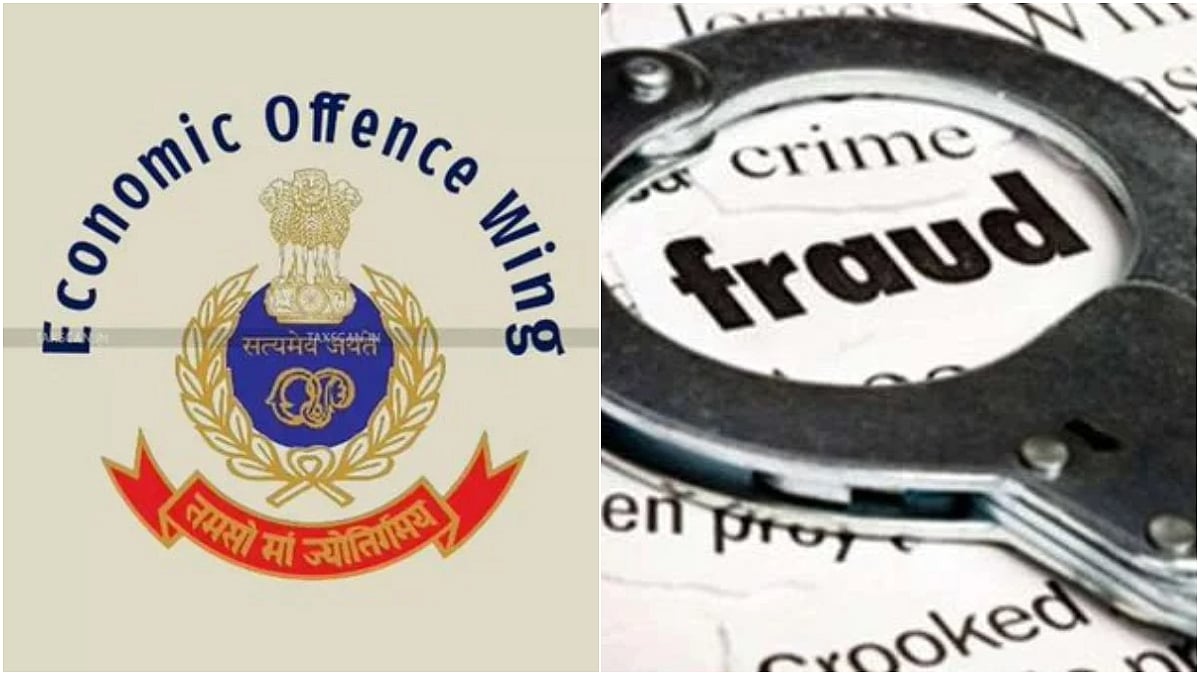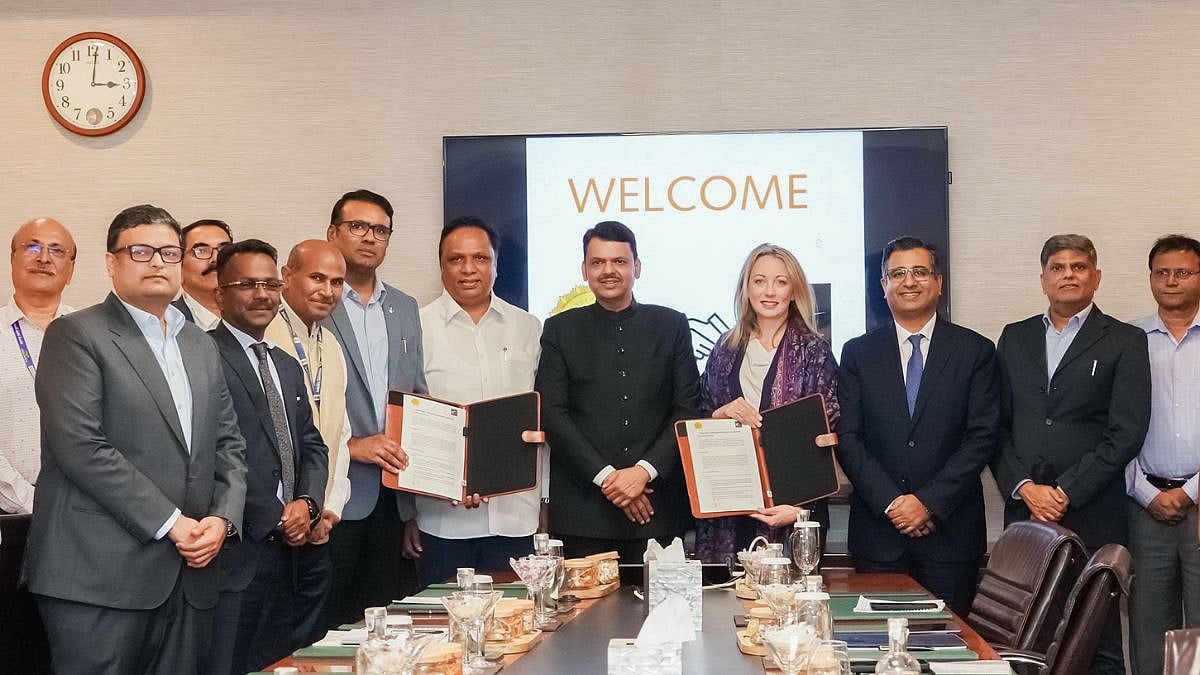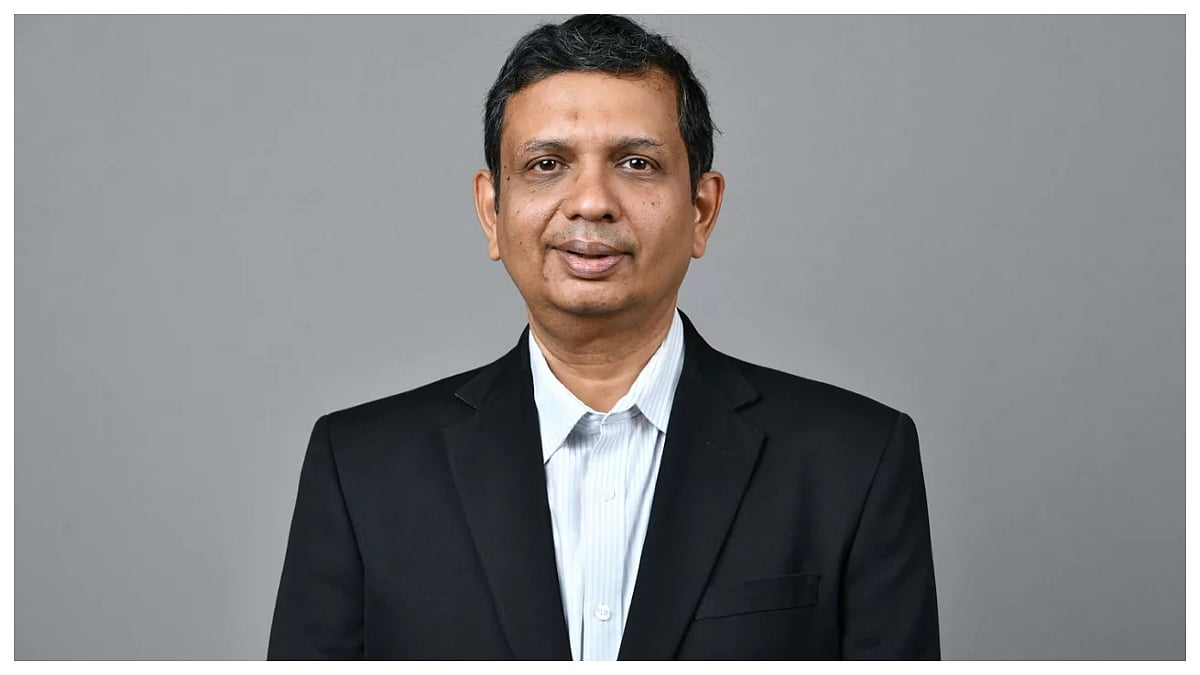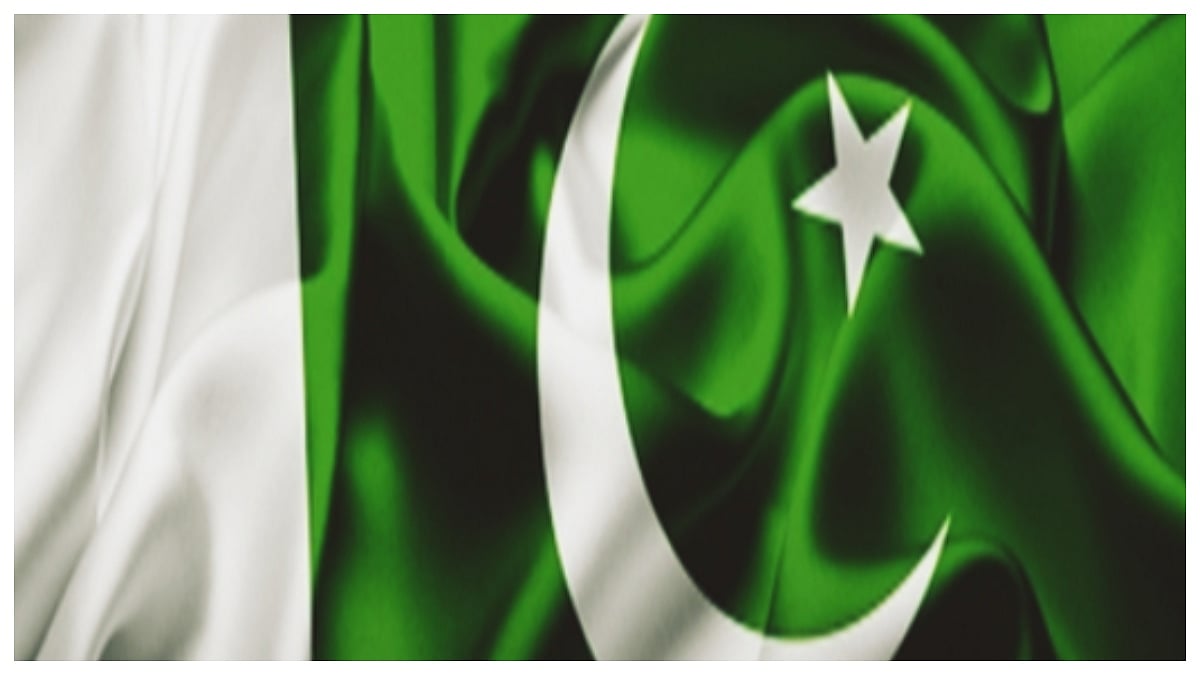Despite the COVID-19 scenario, there are hopes that the demand for gold in rural India will see an uptake. This is mainly due to above-normal rainfall that will drive the agrarian economy. While many feel the rise in gold prices will be a dampener, experts like Nagendra Kumar, Chief Business Officer, NSE; Shivanshu Mehta, Head, Bullion, MCX; Keyur Shah, CEO - Precious Metals Business, Muthoot Pappachan Group; and PR Somasundaram, MD, World Gold Council feel otherwise. These experts from the bullion industry had gathered in a virtual meeting point during the webinar ‘Rural markets and gold’ which was organised by the Free Press Journal and SIES in association with NSE, East-West Seed and NCDEX (National Commodity & Derivatives Exchange) investor protection. While the session was moderated by RN Bhaskar, Consulting Editor, Free Press Journal, the welcome address was delivered by Dr Vaneeta Raney, head, BMM at SIES College.
Given below are edited excerpts compiled by Jescilia K:
Rural market versus urban market
PR Somasundaram, MD, World Gold Council: People use a condescending tone while talking about the rural market. However, for most businesses, it is the backbone of survival and success. It is the rural market that keeps most businesses strong. Nevertheless, it is another matter that we have not found easier ways to penetrate this market.
India is a country of 1.3 billion people. It doesn't matter where you live, it is about serving the population. It is the job of the company or organisation to find ways to serve them.
Rural India is a big opportunity. Post-COVID-19, the rural market will integrate faster than one thinks. This is mainly because we are forced to adapt to things which we would not have otherwise.
Nagendra Kumar, Chief Business Officer, NSE: The divide between the urban and rural market should not exist. This division exists mainly because the market is distributed. In the digital era where there are no boundaries, we need to realign our thought processes.
COVID-19 has been an eye-opener in this regard. We have started to do things that we have not done before. This urban and rural divide is a self-imposed limitation. Customer aspirations are evenly spread. However, there are gaps in aspirations.
It is not an issue with the market but the marketing issue of businesses. If you fail to address the demand with much-needed innovation, then you will have some sections entering the market, creating a paradigm shift and taking the market away.
The whole idea is to open up our minds. We have to look at markets based on potential and not based on urban or rural divide.
Keyur Shah, CEO - Precious Metals Business, Muthoot Pappachan Group: The divide between urban and rural is diminishing slowly. In the case of two states — Punjab and Kerala — you will find everything is connected. The rural and urban divide is done away in these two states in terms of physicality.
Muthoot Pappachan Group has 3,600 branches — about 60 per cent are in rural and semi-urban areas and 40 per cent in metros and urban cities. In our branches, earlier, we had urban and rural classification. But now we have urban, rural and semi-urban. So, an area like Panvel will fall under the semi-urban category whereas Mumbai will fall under urban classification.
Shivanshu Mehta, Head, Bullion, MCX: The Indian economy has always been agrarian in nature. A lot of wealth resides in villages and townships. They are connected linearly in most developed states today.
Indians love gold
PR Somasundaram: Gold has had a very long relationship with India. Gold has been an integral part of the rural economy. About 60-65 per cent of gold demand in India comes from the rural market. For the rural market, gold itself is a success story, although there is a risk involved in moving the metal to remote locations. I would urge other industries to study gold more closely to understand how they pulled it off. There are some positives about the rural market when it comes to gold.
India buys 700-800 tonnes of gold (65 per cent purchased by rural India). Gold has penetrated rural markets much more than banks have in the country. Today, India has around 25,000 tonnes of gold.
Nagendra Kumar: There are around 25,000 tonnes of gold lying with Indian households today. So, in the last year, gold prices have gone up from Rs 35 lakh to 52 lakh per kilo. If it is estimated that 60 per cent is with rural India, that means Rs 25.5 trillion or USD 340 billion (have been added to the value) of gold. It is a positive contribution. It is a notional value but in GDP terms it could be a decent contributor.
Keyur Shah: The confidence in gold as an asset class is at an all-time high. Muthoot Pappachan Group is mainly a gold loan player. However, all its three businesses — gold loan, gold jewellery sales and scrap collection (old gold collection) — are doing well — better than pre-COVID-19 levels. The surprising part is that we are doing very well in selling gold jewellery as well. Our daily sale volumes are higher than pre-COVID-19 levels (for new gold sales).
The demand for gold loans and the jewellery business comes from semi-urban and rural areas. We have seen consistent growth, mostly spikes, in these categories.
The price of gold has gone up. Thus, on the one hand, people are saying that it will be a hit on demand. On the other hand, these people are happy as this (rise in gold prices) is the reason they bought gold in the first place.
Gold was always unaffordable but if it was affordable then it wouldn’t have that same charm. It is a wealth preserver.
The government and the regulator recognise gold as a luxury item and not as a mass product. This is being missed out by the government at times. It caters to the mass requirement. So, there is a need to give it that status.
Shivanshu Mehta: The prudence carried forward for generations (around gold), has been the strong point as a country and that is — gold is a true asset class — a hedge against inflation and everything that goes wrong. It is a real wealth which captures inflation over the years and also protects you on a rainy day.
As a market infrastructure provider, MCX has been associated with gold from day one (since 2003). We have closely followed financial inclusion, empowerment and awareness creation. Today, MCX is present in 28 states, 6 union territories, 1,400 plus cities, and 9, 062 pin codes with around 54,000 authorised professionals. The number of unique client codes registered is close to 39 lakh and terminals that are spread across these pin codes are 27.74 lakh. This is an on-going journey.
We have been able to grow gold demand through our platform due to the transparency, quality and accessibility that is provided. Today, there are many jewellers across the country that are benchmarking their prices against MCX. When customers start asking for things intermediaries start providing it. There is still some price disparity across the country. But, definitely, it is less than earlier. There is a consciousness among the customer who demands a certain price when he or she visits a jewellery shop. In that sense, that is the benchmark of price in the market today.
Golden trends
PR Somasundaram: The use of gold during weddings continues to be the event when gold is usually purchased. Around 60 per cent of jewellery demand comes from weddings. In the urban area, we talk about big weddings. But it is usually rural India that drives gold in relative terms. The expenses at the wedding in the rural area are largely on gold, which is different in the urban area that spends on other elements of weddings (like wedding halls and such things).
Keyur Shah: COVID-19 has reinforced faith in gold as an asset class. Indian masses, usually low-income consumers or who are in the agriculture sector, understand the relationship between gold and inflation far better than any of us. Simple things like when the price of rice and milk goes up, it is time to buy gold. They know this better. They have gone back to gold during difficult times (even during the COVID-19 pandemic).
Two years ago, Kerala had the most devastating floods. Even our branches in the state were flooded. But within two weeks, people came to us to pledge gold as they needed funds to build homes and to cater to other needs. Surprisingly, the sales of gold jewellery also witnessed a rise at that time. We conducted a study at that time. We found that the only thing people could carry with them during a crisis was gold, while other important documents, even currency notes, were wasted away. The aftermath of every calamity has seen such scenarios persist, for instance, the Gujarat earthquake.
Nagendra Kumar: With an interaction with villagers in an area near Visakhapatnam, I learnt that their aspirations were to educate the next-generation, much of the excess money from the farm should be deployed back into farming; and the remaining should be invested in gold.
Gold is an asset class where intergenerational wealth transfer takes place.
Usually, the rural population prefers buying plain jewellery. So, there is value to that gold when they wish to monetise it.
Shivanshu Mehta: Today, people in 1,414 cities and 9, 062 pin codes have access to gold through an exchange by clicking a button. This could be as low as one gram of gold.
Sooner or later, this is going to spread further. People in the rural belt understand that gold is a true friend in times of distress. Thus, the demand for gold coins and bars have gone up in a mammoth way. So, has the demand for ETFs.
Monetisation of gold
PR Somasundaram: Rural market has made us realise the ways gold can be used and monetised. The bulk of the gold loan market is driven by the agriculture sector. Farmers pledge gold for the sowing season. Post-harvest, they come back, repay and take the gold back. The rural market has shown two things: how to monetise gold; and how to access gold and buy it. For gold, the rural market is mature and probably, the urban market is not as mature.
Nagendra Kumar: Based on the discussion with some economists, it was found that there was a strong demand for gold and personal loans until July. As lending at the bank-level became more stringent, the disbursement of gold loans picked up (during this pandemic time).
Keyur Shah: Customers will compromise on the ticket size when prices are high but they will still buy gold. In case, you give them options then the same customer will go for the original ticket size, and pay me in instalments or easy payment terms. So, that is where players like us come into play. There is a need for innovation.
Post-COVID-19, digitisation is becoming important — we all have to get into it. But other options will also be needed.
For instance, in my jewellery business, 95 per cent of my business is not spot purchase. People do not have that money. So, I give the customer the option to come and pay — daily, weekly, monthly — as little as Rs 50.
They look at gold which they can easily monetise — can either pledge it back to us or sell it.
There is a misconception that people sell for emergencies — very few do that. Most people sell gold to achieve a life milestone like buying a new house or renovating the house or a wedding function or education.
In our case, we offer gold loans for education as well. Post COVID-19, we introduced ‘Restart India’— giving loans to small (micro) businesses to restart. Thus, gold is here to stay.
Shivanshu Mehta: After financial inclusion, the next buzzword is digitisation and monetisation. Gold loan companies are helping to realise the vision of monetisation — when people come and pledge.
We, at MCX, plan to get this gold monetised further by getting it standardised and refined at certain approved refineries. So, it can become part of the lending and borrowing system at the exchange level.
Digitalisation of gold
PR Somasundaram: In urban areas, you can buy gold using digital technology. The question is if this will be a big trend in the rural markets. The answer is yes and no. There will be a big change in the way you engage in buying jewellery. But jewellery buying is a completely delightful personalised physical experience.
Rural India understands the value of gold. Even today, India is a 22-karat gold market. The rural market understands the wealth that is hidden in gold. The rural market will digitally engage. But the physical experience of buying will be a big activity at least for the rural market.
Keyur Shah: Digital gold is the way forward. Today, RBI does not recognise digital gold. So, gold loan companies cannot give loans against digital gold. Post-COVID-19, I hope this changes.
The digitalisation of gold is the way forward and allowing loan against it will change things drastically. This will allow digital gold to become big in rural India as well.
Smuggled gold
PR Somasundaram: Buying smuggled gold or gold without a bill is the worst decision a gold buyer can take. So, it is better to pay the duty, get it hallmarked and have a proper bill in place. In case there is an issue in the future, then you can go back and make your demand to the retailer.
The rural market generally understands commodities much better than the urban market. There is a need to create awareness that such purchases (without a bill) will be a risk for the consumer.
Usually, the smuggler or the gold seller does not pass the profit to the customer.
Keyur Shah: Consumers do not care or know about the breakup of gold prices. At present, the gold prices have gone up as the international prices have increased and the rupee has depreciated. The consumer usually does not care about the factor that is driving the gold prices, but the price of gold.
The differential between organised and unorganised players is the three per cent GST with or without a bill. Smuggling profits are pocketed either by the smugglers or the jeweller and are not passed on to the consumer. It may sound that the profit is passed to the consumer but that is not the case.
Now, we have seen the change that the GST regime has brought about after settling or maturing. The option of with or without a bill is not offered easily today. The reason is that with GST the retailers have to match the supply and sales books. If there is a mismatch, there is a problem. Slowly and gradually, there is a movement towards invoiced sales. And if there is a bill anyone can honour it, which is not possible otherwise.
Another thing is the hallmarking. It is now compulsory— postponed by a few months due to the pandemic but everyone will have to come into the fold sooner or later. So, eventually, all the gold that is sold has to be hallmarked.
Shivanshu Mehta: There are evils like Dabba trading. There has been a constant endeavour to eliminate this evil. We constantly hear of stories where a cartel has vanished taking away the wealth of many people. From the rural segment, we have to wipe this out. The efforts are on from the side of the exchanges and the regulator in this direction.
Outlook for gold
Nagendra Kumar: This year rural India will be a big buyer of gold as there has been a better monsoon. As of August 22, we have received 7 per cent excess rainfall on a long period average basis. According to the World Gold Council and Thomson Reuters, every one per cent increase in monsoon rainfall above the long-term average will increase the gold demand by 0.5 per cent.
Around 22 states have witnessed normal rainfall and crop prices have also gone up, mainly pulses. Vegetable prices have dropped sharply. After three years, food inflation has gone up. The level of water in reservoirs has gone up too. The kharif sowing this season increased by 9 per cent. Tractor sales have gone up in July as well. If you look at all these variables, the outlook for gold is that it is going to be a good season.











